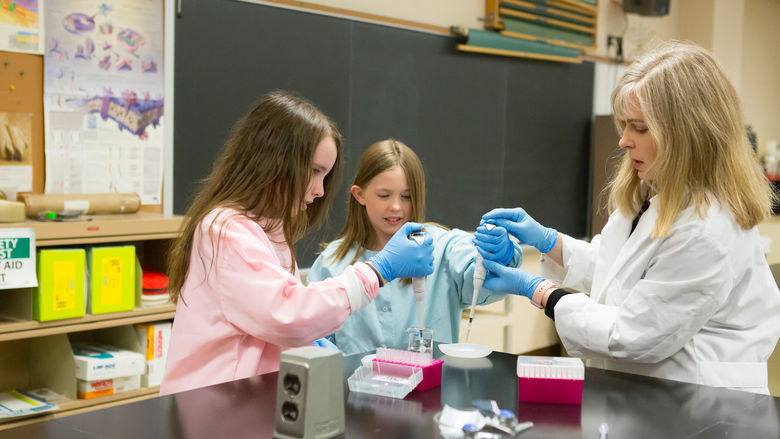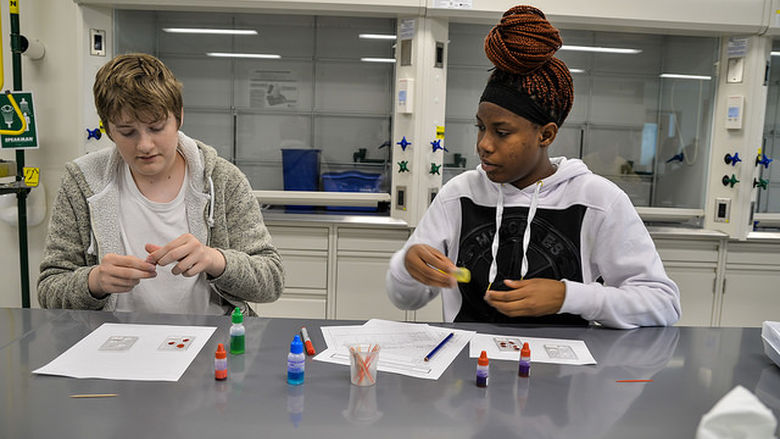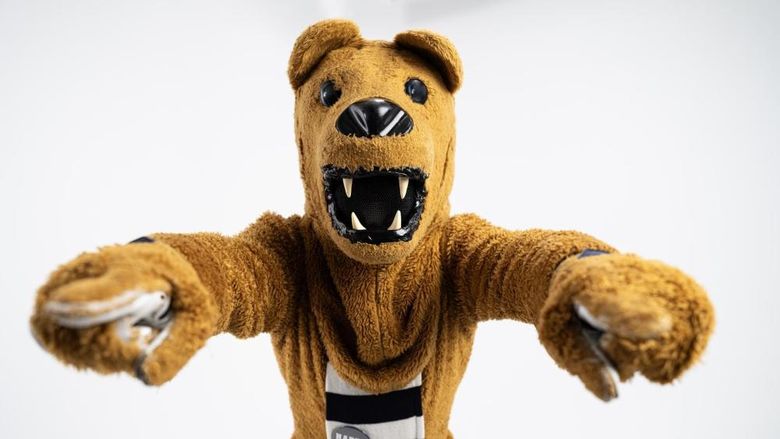Penn State Beaver engineering students work on one of the modern bat house designs that will be hung in Cranberry Park. The designs incorporated the biological needs of the bats.
MONACA, Pa. — Bats are finicky about their real estate.
Their ideal abode is 15-20 feet off the ground, in direct sunlight for eight hours a day, close to water, and far from predators and artificial light.
So when Cassandra Miller-Butterworth and Stephanie Cabarcas-Petroski’s biology students and Jim Hendrickson and Sherry Kratsas’ engineering students collaborated to research, design and build bat houses for class last spring, they found only two spots on Penn State Beaver’s campus that were just right — near the softball field and near the pond — and installed traditional houses there on Earth Day.
Four other bat houses — all modern designs of the engineering students — went unhung, until now. Thanks to the efforts of Kratsas, Cranberry Township has agreed to place the remaining bat houses throughout its parks system this summer.
Miller-Butterworth is thrilled, because more bat houses could equal more bats, and more bats certainly equals a better-balanced ecology.
“I love bats,” Miller-Butterworth said. “Bats are my passion.”
Farmer’s best friend
In popular culture, bats are ugly, winged things that come out on Halloween and can instantly morph into blood-drinking vampires. In reality, they’re useful little creatures that come out on summer nights to gobble up all of the nuisance insects we don’t want in our yards or on our crops.
In fact, bats can eat their body weight in insects in a single night and, one study estimates, save farmers $23 billion per year in pesticides. Which is why the spread of white-nose syndrome — the disease that has killed more than 7 million bats since 2006 — is so terrifying.
Little brown bats, the kind that populate the area and that Miller-Butterworth studies, have been particularly hard hit. In some caves, the mortality rate has reached 90 percent.
This is how it happens: In the winter, little brown bats seek out cold, dry caves where they can lower their body temperatures for a season of hibernation.
Unfortunately, the fungus that causes white-nose syndrome also likes it cold and dry, and it takes advantage of the bats’ vulnerable state, infecting wings and causing them to wake multiple times from their slumber. Each time they wake, they use up valuable fat reserves.
“Eventually,” Miller-Butterworth said, “they die of starvation and dehydration.”
Those bats that manage to survive the winter appear to have some immunity to the disease, but the situation remains dire because they often first need to be nursed back to health.
“It’s not practical to do that with hundreds of thousands of bats,” Miller-Butterworth said.
And those that do survive will have a difficult time repopulating the species. Bats only give birth to one pup a summer, and many pups don’t survive their first year.
The fallout of all of this is, without an answer to white-nose syndrome, little brown bats could be extinct in the next 15 to 20 years.
Safe home
So will six bat houses in two counties really help save the species?
It’s complicated.
The houses offer female bats safe places to roost with their fragile pups. And the very act of planning and building the houses offered students a close-up view of the bats’ ecological importance. The more people who understand that importance, the better chance scientists like Miller-Butterworth have of helping the population.
But first, the bats will have to take up residence in the houses. Last summer, both houses on campus remained empty, but Miller-Butterworth remains optimistic. Bats often take a year or two to decide on the right real estate. (Remember, they’re finicky.)
And, if bats do come to Penn State Beaver, Miller-Butterworth will immediately begin working on another project: bat cams.
“It’s my dream is to have a bat cam on the website,” she said.
To read the papers Miller-Butterworth has published on little brown bats, click here and here.
April Johnston
Public Relations Director, Penn State Beaver




